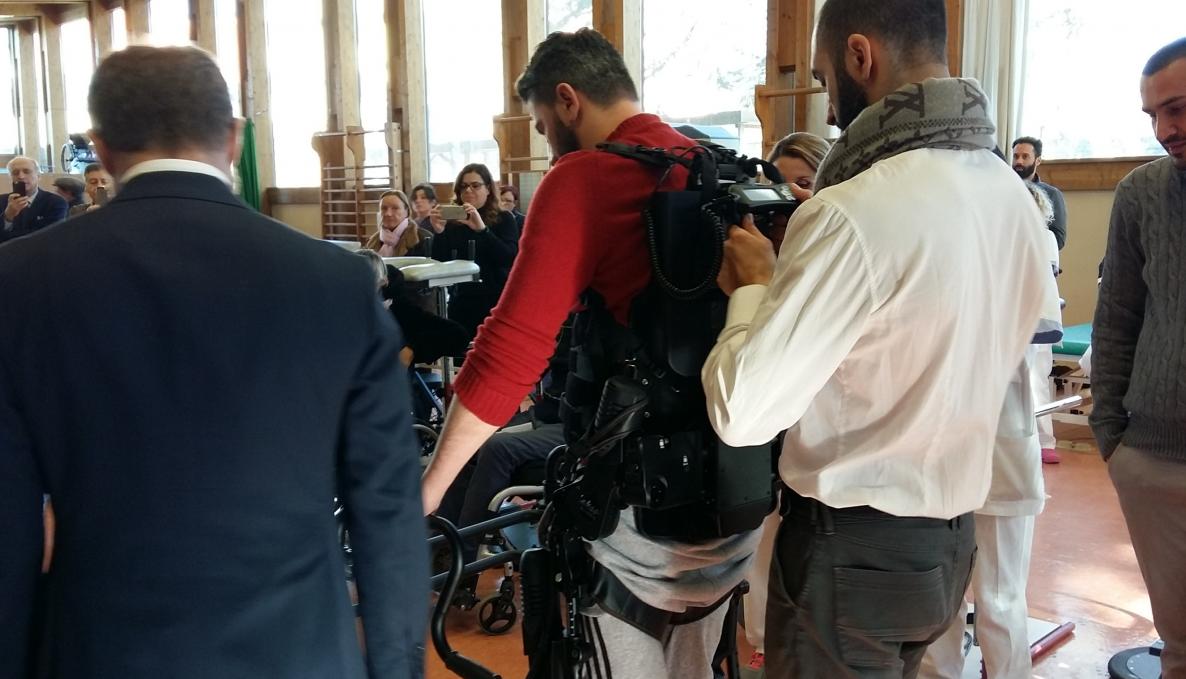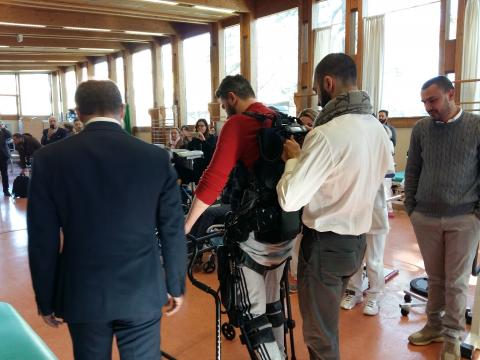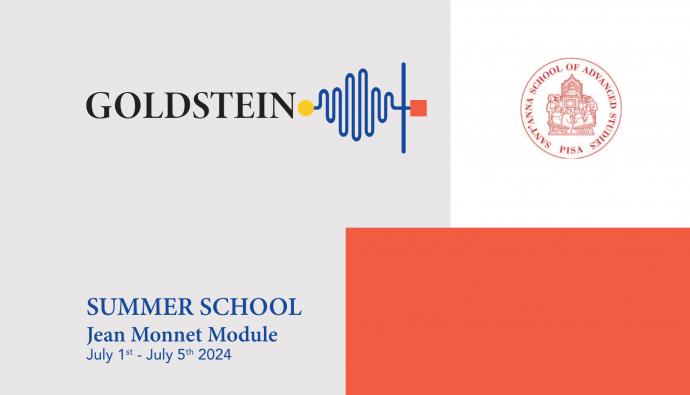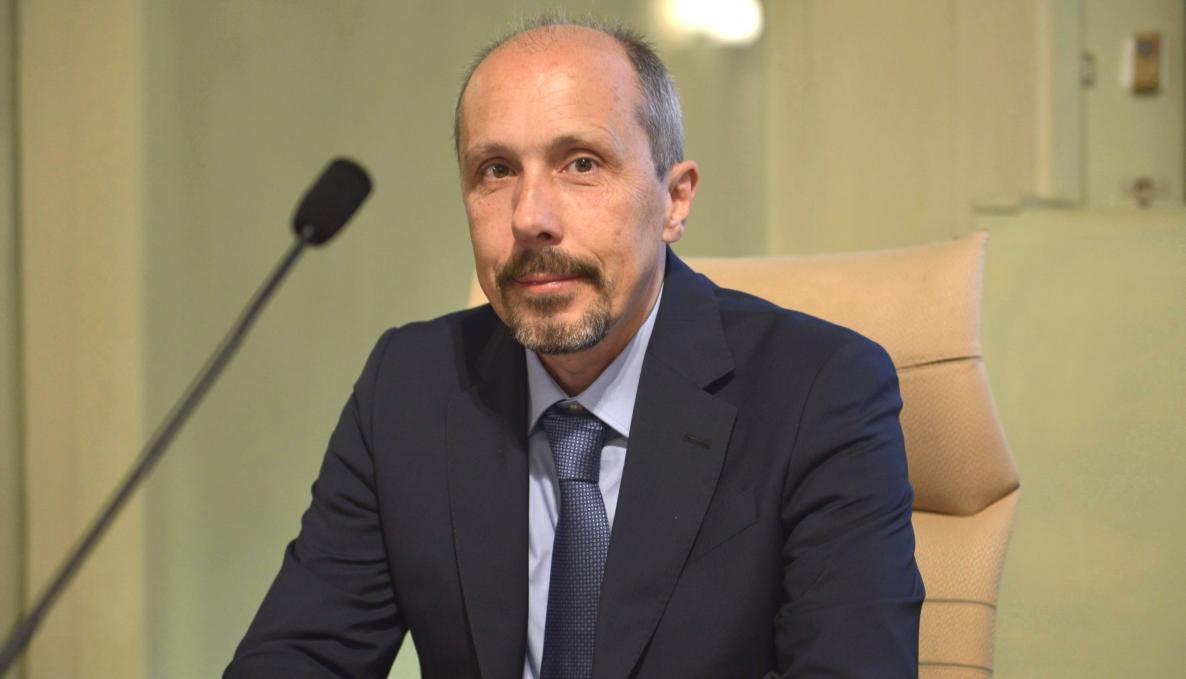A new generation of exoskeletons for patients with spinal cord injury: the CLIMB project by Sant’Anna School and Unità Spinale CTO - Careggi receives funding from CR Firenze foundation

The TECIP institute of Sant’Anna School and the Unità Spinale CTO Careggi have received 200.000 euro in funding from the CR Firenze Foundation for developing ergonomic and human-centered exoskeletons to help patients with spinal cord injuries. Gabriele Gori, director of CR Firenze Foundation; Antonio Frisoli, professor of Mechanical Engineering and Applied Mechanics o at Sant’Anna School; Giulio Del Popolo, Director of Unità Spinale CTO; Giuliano Coradeschi, founder of Habilia Onlus; Manuela Cappellini, president of Toscana Paraplegici Onlus Association , presented yesterday the project titled CLIMB at the Rehabilitation Center of CTO Careggi.
The exoskeleton is a robotic device that targets muscle activation of proximal and posterior lower extremity muscles to increase muscle activity, improve coordination patterns and ultimately enhance functional outcomes capacity during rehabilitation. Several studies have shown that specific training improves balance outcome measures in patients while supported by the exoskeleton. The partnership between Sant’Anna School TECIP Institute, Habilia Onlus, and Associazione Toscana Paraplegici (ATP) is focused on the 2-year CLIMB project to develop a system which can be adjustable and fit patients with different levels of spinal cord injury and persons with paraplegia.
Additional “soft robotics” research for wearable and light devices is sought into damaged spinal nerve structures especially in paralyzed patients whose muscles operate with signals that are too weak to reach the arm. The wearable devices will effectively connect to the patient's nervous system and help the individual to regain some mobility.
"Robotics has become valuable in the rehabilitation of spinal cord injury. This exoskeleton differs from other robotic systems in its unique and successful control directly by the patient" said professor Antonio Frisoli. “We aim to create new technologies that will benefit paraplegic patients with the fine motor control needed to carry out everyday tasks. The exoskeleton will help to restore independence in patients”.
Spinal cord injuries divided into two broad categories, incomplete and complete, are the product of damage. Spinal cord can be partially or fully severed and the degree of functions retained depends on the extent of the injuries. Spinal cord injuries are increasingly common and concentrated in young people (average 29 year old); in Italy, reported incidence is 18-20 new injuries per 1000 population. After the initial injury, it is necessary to prevent secondary problems that may arise and the length of hospitalization depends on the conditions the patient is facing. Early rehabilitation is important to prevent joint contractures, the loss of muscle strength and the conservation of bone density. Robotic assistive devices can help people with a spinal cord injury become more independent and more mobile without using a wheelchair. Robotic gait training will allow people with spinal cord injuries to stand, walk, reach and grip.




